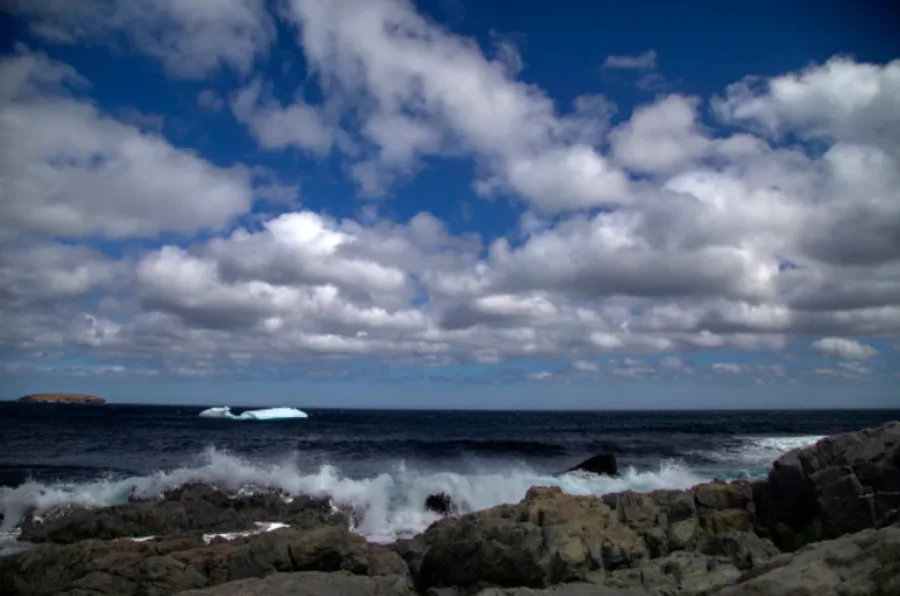
Icebergs, dead ahead! Ocean behemoths heading to the shores of Newfoundland
Iceberg enthusiasts in Newfoundland will soon have plenty to talk about as about 20 bergs are headed toward the island in the coming weeks.
According to Marcus Hirschenberg and Michael Hicks of the International Ice Patrol, which monitors the movement of icebergs in the north Atlantic Ocean, the 20 icebergs have drifted past the latitude of 48 degrees south, roughly the same latitude as St. John's.
Icebergs have already have been spotted in Bonavista, Mobile and other locations this month.

About 20 icebergs are headed toward the coast of Newfoundland, according to the International Ice Patrol. This particular iceberg was spotted in Bonavista in 2020. (Trinity Eco-Tours via CBC News)
It's an increase from last year, when just one iceberg drifted south of that latitude, but Hicks says it still looks like it will be a light iceberg season for the province compared with previous years.
"Normally by this time, the end of April actually, we have near 350 icebergs that have drifted south of that latitude," Hicks told CBC News on Wednesday.
"We're not going to see that many more this year. And while the ice conditions have been somewhat supportive of a larger number of icebergs, particularly along the northern Labrador coast, where sea ice has actually been above normal, south of say, Goose Bay, the sea ice coverage has been below normal."
The lack of ice coverage means more icebergs will be exposed to open water, Hicks said, meaning they are more likely to deteriorate and not make it as far south as expected.

This smaller iceberg was seen in Mobile on the island's Southern Shore earlier this month. (Submitted by Alick Tsui via CBC News)
The International Ice Patrol is also changing the way it tracks icebergs across the north Atlantic Ocean.
The group has traditionally used aircraft to reconnoiter arriving icebergs, working to alert commercial shipping vessels of any incoming traffic. The International Ice Patrol, along with the Canadian Ice Service and the U.S. National Ice Centre, work with flight companies including Newfoundland-based PAL Aerospace to operate the flights.
WATCH BELOW: UNDERWATER LANDSLIDES, TRIGGERED BY ICEBERGS, COULD LEAD TO DEADLY TSUNAMIS
However, Hirschenberg said work is now being done to allow satellites to track their movement in the future.
"We're still at the point where the aircraft is the most reliable reconnaissance, but we're getting much closer every day to having similar confidence in our use of satellites," he said. "We're starting to use commercial satellite imagery, which is higher resolution than what we're currently using, which is getting us much closer every day."
That extra resolution makes all the difference, Hicks said, as being able to confidently determine what is and isn't an iceberg is essential. The satellites can take pictures through clouds and, unlike planes, don't need to land.
Flights will still continue in the meantime, though, usually launching every other week from February to July.
The story was originally published by CBC News with files from Gavin Simms





